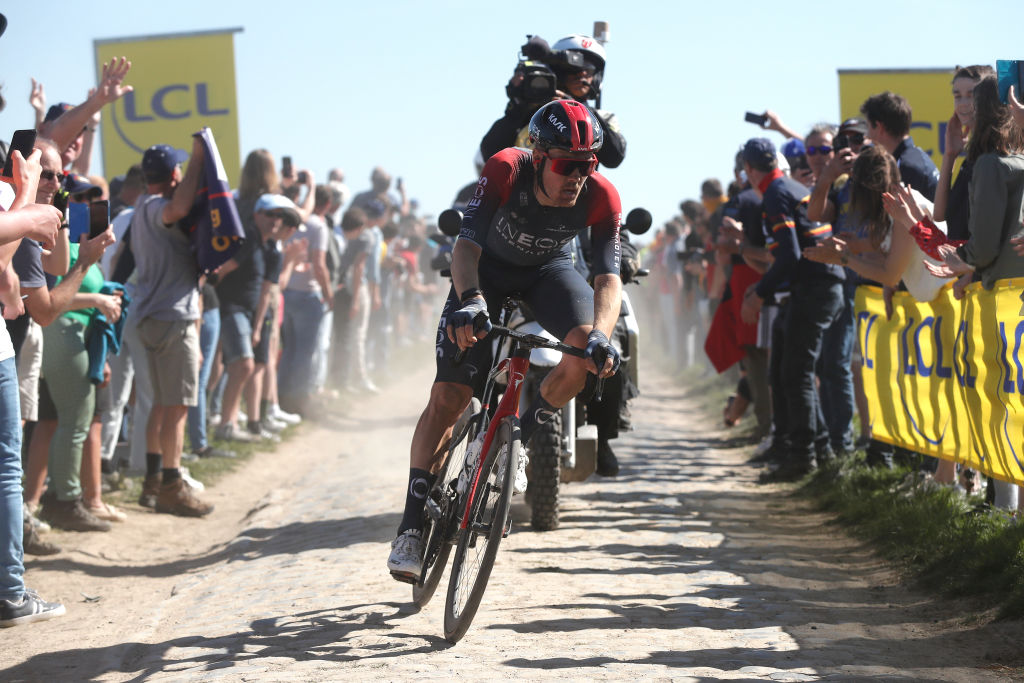What is Mons-en-Pévèle? A look at one of the trickiest sections of Paris-Roubaix
This critical sector of the Hell of the North can be where the race is won or lost

The Mons-en-Pévèle sector is one of three five-star cobbled sectors of Paris-Roubaix, together with Carrefour de l'Arbre and the Trouée de Arenberg - the trickiest and hardest parts of the race. Also known as the Pavé du Blocus, the 3-kilometre sector is the 11th to last cobbled stretch out of 29 in the 2024 Hell of the North
This notorious cobbled sector has been a constant feature since its introduction to the Paris-Roubaix route in 1978, bar 2011. However, only the first 1100-metre section was used in the 1997, 2000, 2002 and 2003 editions of the race.
Its position in the final 50 kilometres of the race combined with a narrow entrance, uphill sections and chicanes, often forces a decisive split in the reduced peloton. Miss the split and your chances of victory are almost nil. The real contenders will come to the forefront to battle to be first in the velodrome.
Stijn Devolder's attack on this sector aided the victory of his team-mate Tom Boonen in 2008. The following year, Boonen used this sector to reduce the lead group to six riders before racing to back-to-back victories.
Mat Hayman, the 2016 Paris-Roubaix winner, stated that this sector is decisive in making the finale, saying: ”If you can get through this sector then you need to settle in and prepare yourself for the fact that you're going to have a chance.”
| Location | Mons-en-Pévèle, Département Nord in France |
| Length | 3000 metres |
| First used in Paris-Roubaix | 1978 |
The third-longest sector starts with a gentle 300-metre descent followed by a 800-metre slight uphill before a 90° right turn onto a flat portion for another 800 metres. A hard left turn, which can difficult to negotiate in muddy conditions, leads into a false flat for the final 1100 metres.
In 2010, Fabian Cancellara made his race-winning attack near the Mons-en-Pévèle sector of cobbles. Even though he only had a small gap on his rivals at the exit of the pavé sector, Cancellara was convinced that he would win, and he did.
Get The Leadout Newsletter
The latest race content, interviews, features, reviews and expert buying guides, direct to your inbox!
This stretch of pavé can also decide the loser, of course. In 2006, George Hincapie’s aluminium steerer tube infamously snapped here, causing him to crash, injuring his shoulder and derailing his spring classics season.
In 2016, Peter Sagan saw his chance to chase back to the front group disappear in the dust when Cancellara crashed in front of him. In 2017, Hayman missed the decisive split and had to settle for 11th place.
The sector has been included in women's Paris-Roubaix as one of two five-star stretches of pavé since the first edition of the race in 2021.
Lyne has been involved in professional cycling for more than 15 years in both news reporting and sports marketing. She founded Podium Insight in 2008, quickly becoming a trusted source for news of the North American professional cycling world. She was the first to successfully use social media to consistently provide timely and live race updates for all fans. She is proud to have covered men's and women's news equally during her tenure at the helm of the site. Her writing has appeared on Cyclingnews and other news sites.
